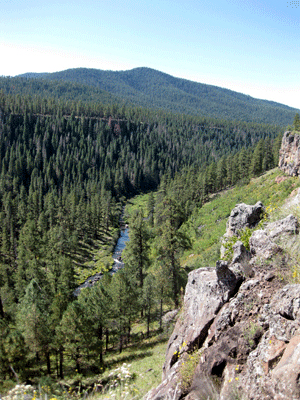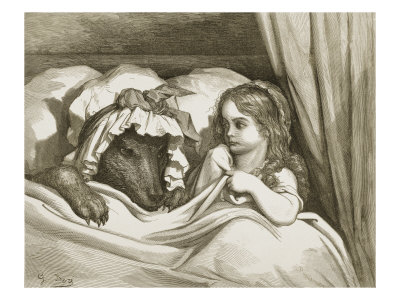16
Feb
Letters to the Editor – Holding Their Own

Writing a letter to the editor of your local newspaper is an excellent way to raise awareness about critically endangered Mexican gray wolves and the steps needed to help them thrive. Surveys of newspaper readers show that the letters page is among the most closely read parts of the paper. It’s also the page policy-makers look to as a barometer of public opinion.
Below are excellent letters published recently.
*****
THE CLOCK KEEPS TICKING
FOURTEEN YEARS after the federal government started bringing them back, Mexican gray wolves now face a second extinction in the wild.
This glorious animal, the epitome of the wild spirit, of a free and unspoiled wilderness, an animal that was practically
deified by the Native Americans, is in serious danger of becoming extinct unless Dr. Benjamin N. Tuggle, the regional
director for the U.S. Fish and Wildlife Service’s Southwest Region, takes action to immediately begin the process of
releasing Mexican wolves directly into New Mexico.
Healthy life on earth depends, in part, on ecological balance. Scientists have long understood the desirability of
maintaining this balance so one species does not unnecessarily decimate another. “¦
The Mexican Wolf Reintroduction Program was benchmarked by 2006 at 100 successful wolves in New Mexico, and yet, today New Mexico has, according to the latest census, only 58 wolves and six breeding pairs. While this is a modest increase from last year’s total, we must wonder: What’s the holdup in releasing more into New Mexico? The holdup is that Tuggle has been sitting on the required Environmental Assessment. Once released for public review, said assessment would allow direct releases of Mexican wolves into New Mexico.
Together we can help Tuggle carry out his mandate to protect and defend endangered species by calling on him to
immediately begin the process of releasing Mexican gray wolves into New Mexico.
JEFFREY FIELD
Las Cruces
~~~
YES, WE CAN LIVE TOGETHER
ENDING THIS polarizing debate is long overdue. Both wolves and ranchers are endangered and need large landscapes to survive. Ranchers living on the edge don’t want to sell and subdivide their land. Wolves don’t need that either.
Contrary to the hype, there are ranchers and environmentalists who continue to work together to minimize the estimated 0.3 percent to 2.5 percent of cattle losses to Mexican wolves. There are success stories ranchers don’t want publicized
because they value their privacy or don’t want to be ostracized by neighbors. Wolves can provide economic and ecological benefits to ranchers.
I am a biologist who has studied canid behavior and lived with carnivores for many years. There is no need to fear wolves. Rather, the data show that we are menacing to wolves. Meanwhile, let’s put politicking aside and get more wolves on the ground. As Dr. Benjamin Tuggle, the U.S. Fish and Wildlife Service’s Southwest Regional director, says, illegal killings and decreased genetic diversity continue to threaten this fragile population.
KIM MCCREERY
Regional Director New Mexico Wilderness Alliance
Silver City
~~~
 RESTORE BALANCE OF NATURE
RESTORE BALANCE OF NATURECLOSE TO 20 years ago, wolves were reintroduced into Yellowstone National Park. Within two years park managers noticed a remarkable change in vegetation in the park, that is, a decline of invasive species and the return of native plants and trees. It turned out wolves kept the deer population under control, whose browsing of native plants was out of balance because there was no natural predation of deer. Once the deer were back to more normal levels, the plants that sustain them crowded out the invasive species.
The idea hunters should complain that wolves take away their “game” and force through legislation to eradicate predators such as wolves and coyotes so they will have a deer around every corner defeats the entire system of natural balance in forests.
Wolves provide a valuable — priceless, even — service to the very forests and the animals living in them. The same can be said for Mexican wolves in the Sonoran desert, on either side of the border. They too, provide a valuable service and cause no damage compared with the cattle grazing on desert land.
Protect the Mexican wolf and all the other predators to preserve our wild country. Protect them now.
SINA BRUSH
Stanley
~~~
THEY’RE PART OF OUR HERITAGE
RECENTLY THE numbers for Mexican gray wolves —lobos — in the wild were released. It is of grave concern to me that these numbers, though slowly rising, are still dangerously low. The recovery program had hopes of reaching 100 wolves in the wild by 2006; yet here we are, six years later, at 58.
The lobo has great significance to New Mexico, both historically and in the interest of biodiversity. Historically, the
Lobo had a range of up into central New Mexico and Arizona and down into central Mexico. Recently, there have been studies done in some of our national parks showing that the removal of top predators, like the Lobo, has an effect on the entire ecosystem.
So, why are these numbers still so low? One easy way to boost numbers is to allow direct releases of Mexican gray wolves into New Mexico. There are more than 300 wolves in captivity, and allowing direct releases into New Mexico would have a significant impact on both population numbers and genetic diversity. “¦
It will be a sad day for the world should we lose an animal as amazing and beautiful as the Mexican gray wolf, especially when we have the ability to ensure its re-establishment.
PATRICIA SNYDER
Las Cruces
~~~
LOVE THEM; SET THEM FREE
HIGHLIGHTING THE recent Mexican gray wolf count in the Albuquerque Journal article of Feb. 3, “More Mexican Wolves Roam the SW.” Thankfully for the wolves and thanks to this newspaper for its continuous promotion of the Lobo.
While it is very good news that there are now 58 wolves in the greater Gila Bioregion versus 50 last year, there is no time to pause the reintroduction effort as the wild population is still too small to maintain adequate genetic diversity that can ensure a viable and robust (population).
More wolves need to be released now and at regular intervals from the captive breeding populations to ensure this critical need for genetic mixing. Only 18 pups were counted in December from the original 38 seen earlier in the year. With greater genetic diversity, it is predicted that pup survival will improve.
The large majorities of the populations of N.M. — 69 percent — and Arizona —76 percent — favor the Lobo to live a unhindered existence and want the reintroduction effort to succeed, recent polls have shown.
Let’s continue the trend of an increasing Mexican wolf population and ask the U.S. Fish and Wildlife Service and other involved government agencies to release captive wolves into the wild to build on the momentum we have now.
DR. JON SPAR
Albuquerque
~~~
SAVE PART OF WILD HERITAGE
ACCORDING TO what I read, wolves are dying off rapidly, some shot down by aircraft as they run for their lives. Here in New Mexico only (58) wolves remain in addition to the Mexican grays at the zoo. At this rate the only remaining animals of this species will be the one in front of the Central Street entrance to UNM. Almost all of us love animals — cats stare at passersby from windows and tiny dogs trot by in pairs. It seems to me that a part of our wilderness could continue to hold this native species and we could change the policy of protecting him or her whenever the numbers increase substantially.
THORA GUINN
Albuquerque
~~~

NO OSCARS FOR ‘THE GREY’
“AN UNRULY group of oil-rig roughnecks’ plane crashes into the remote Alaskan wilderness. Battling mortal injuries and merciless weather, the survivors have only a few days to escape the icy elements —and a vicious pack of rogue wolves on the hunt— before their time runs out.”
This is the description of Liam Neeson’s new movie, “The Grey.” This ridiculous plot reinforces the bad rap wolves have gotten as a result of the myths propagated by books and movies. From the time we are little kids we learn that wolves are dangerous, bloodthirsty killers. Stories such as “The 3 Little Pigs” and “Little Red Riding Hood” ensure that the fear of wolves is ingrained in us.
Now we have this monstrosity of a movie that reminds one a bit of the portrayal of sharks in “Jaws.” As a result of “Jaws,” people immediately became hysterical at the mere thought of a shark. For this to happen to wolves would be a travesty. Speaking of travesty I should note that Liam and the crew actually ate two wolves, presumably in the name of “method acting.”
Let’s look at some facts. Wolves are shy of people and make every effort to avoid contact with them. Only two people have been killed by wolves in over 100 years in North America. You are more likely to be killed by a lightning strike than by a wolf.
Here in New Mexico, wolves cannot afford to have more lies and propaganda spread about them. New Mexico and Arizona are home to the most endangered wolf species in North America, the Mexican gray wolf. With only around 50 left in the wild, and a sputtering reintroduction program, we must do everything we can to protect this beautiful, vital species.
JASON BURKE
Field Organizer, Southwest Environmental Center
Las Cruces
~~~
MAKE RULES FAIR FOR THEM
I AM WRITING to express my concerns about Mexican gray wolf populations in New Mexico and Arizona. These wolves have been listed as endangered species since 1976, and current policy is not supporting recovery of their populations in the wild. U.S. Fish and Wildlife Services rules prevent direct release into New Mexico. These rules are outdated. An environmental assessment on likely impacts of direct release into New Mexico needs to be done, and these rules need to be updated. Census data show that there are far fewer Mexican gray wolves in the wild than past projections have anticipated, and an estimate of only six breeding pairs. These numbers will not sustain their populations.
There are more than 300 captive Mexican gray wolves, many ready to be released, and the best unoccupied habitat is within New Mexico. A sufficient wolf population is part of a healthy and sustainable ecosystem. “¦
Releasing wolves into the wild is safe. Wild wolves do not attack people, and livestock concerns appear to be exaggerated: Scat analyses have shown livestock estimated to be only around 4 percent of their total diet, and livestock loss due to wolves is estimated to be around 0.1 percent of total losses.
FWS SW Regional Director Benjamin Tuggle has the opportunity to remediate the current rules that are (keeping) Mexican gray wolves on the endangered species list. I urge him to recognize this opportunity and take immediate action toward responsible Mexican gray wolf population recovery efforts.
ABIGAIL ROTHOLZ
Las Cruces
*****
You can follow this thread of letters at Albuquerque Journal Letters
Many thanks and congratulations to these talented and dedicated letter writers-your letters make a big difference in the effort to protect and recover our lobos!
Submit YOUR letter to the Editor of the Albuquerque Journal, thanking them for their coverage of this important issue. The letters to the editor page is one of the most widely read, influential parts of the newspaper. One letter from you can reach thousands of people and will also likely be read by the U.S. Fish and Wildlife Service.
Tips for writing your letter are below, but please write in your own words, from your own experience.
Letter Writing Tips & Talking Points
Below are a few suggestions for ensuring your message gets through clearly. Your letter will be most effective if you focus on a few key points, so don’t try to use all of these. If you need additional help or want someone to review your letter before you send it, email it toinfo@mexicanwolves.org:
* Start by thanking paper for their coverage of this important issue-this makes your letter immediately relevant and increases its chances of being published.
* Stress that the welcome increase in numbers and breeding pairs, in spite of the deaths of nine wolves and more than half the pups born last year, shows that the wolves are amazingly resilient and able to thrive in the wild. They’ve done their part to succeed in the wild in the face of political opposition, killings, and removals; Director Tuggle needs to make sure the Fish and Wildlife Service does its part.
* Point out that the U.S. Fish and Wildlife Service’s efforts to keep more wolves in the wild by emphasizing tactics that help ranching and wolves coexist instead of removing wolves is starting to pay off.
* Emphasize that when packs are more stable they’re able to be better parents, and pups have a better chance at reaching adulthood and reproducing themselves.
* Point out that, while this is a positive step forward, this number is still dangerously low; Director Tuggle must keep his promise to release more wolves into the wild.
* Encourage the U.S Fish and Wildlife Service to use all the means available to them to expedite more releases of captive wolves into the wild. The agency has been sitting on an Environmental Assessment that can end the ridiculous rule prohibiting new releases into New Mexico and letting wolves eligible for release into both Arizona and New Mexico sit in captivity. The stalling has to stop.
* Convey how important new releases of wolves into the wild are to increase the population’s numbers and genetic health – A population of 58 wolves is still extremely small and at risk from threats such as disease, inbreeding, or catastrophic events like the Wallow Fire, which burned through Mexican wolf habitat last year.
* Explain that there are wolves in captivity ready to be released and wolves in the wild that do not have mates; these wolves need more releases to form new breeding pairs and families.
* Talk about your personal connection to wolves and why the issue is important to you. If you’re a grandmother wanting your grandchildren to have the opportunity to hear wolves in the wild, or a hunter who recognizes that wolves make game herds healthier, or a businessperson who knows that wolves have brought millions in ecotourism dollars to Yellowstone, say so.
* Reiterate the ecological benefits of wolves to entire ecosystems and all wildlife. Wildlife biologists believe that Mexican wolves will improve the overall health of the Southwest and its rivers and streams — just as the return of gray wolves to Yellowstone has helped restore balance to its lands and waters.
* Keep your letter brief, between 150-300 words.
* Provide your name, address, occupation, and phone number; your full address, occupation, and phone number will not be published, but they are required in order to have your letter published.
You can submit your letters to other regional papers here:
ARIZONA NEWSPAPERS:
* The Arizona Republic – 200 word limit. Submit your letter here.
*Arizona Daily Star – 150 word limit. Submit your letter here.
* Arizona Daily Sun – 250 word limit. Submit your letter here.
* The White Mountain Independent — 300 word limit. Submit your letter here.
NEW MEXICO NEWSPAPERS:
* Albuquerque Journal – Submit your letter here.
* Santa Fe New Mexican – 150 word limit. Submit your letter here.
* Las Cruces Sun-News – 300 word limit. Submit your letter here.
* Alamogordo News – Submit your letter here.
Thank you for taking the time to submit a letter. The many letters to the editor expressing support for Mexican gray wolves published in the last year have made a real difference!
Please send any letters you submit to us — info@mexicanwolves.org – so that we can track what’s being published.
Even more information about submitting letters to the Editor here.



